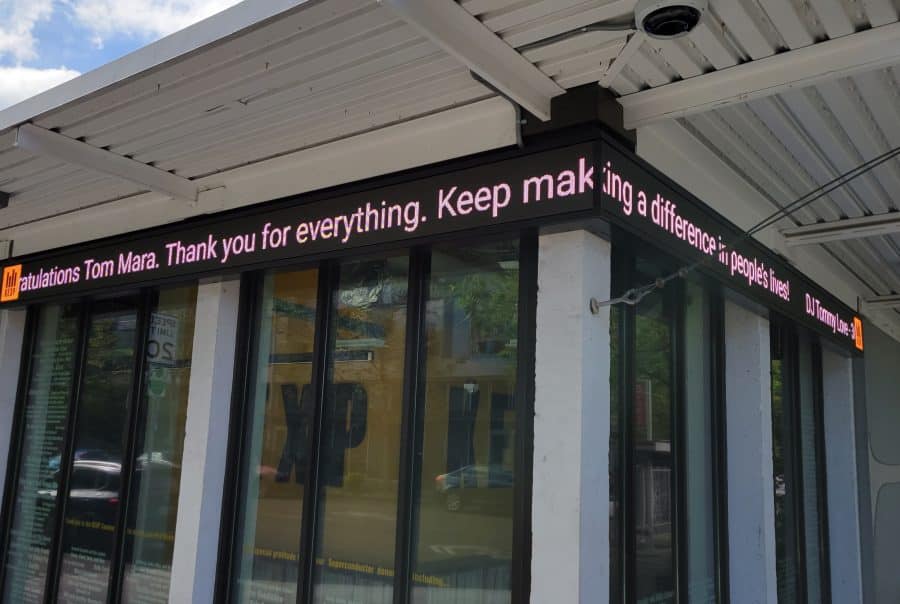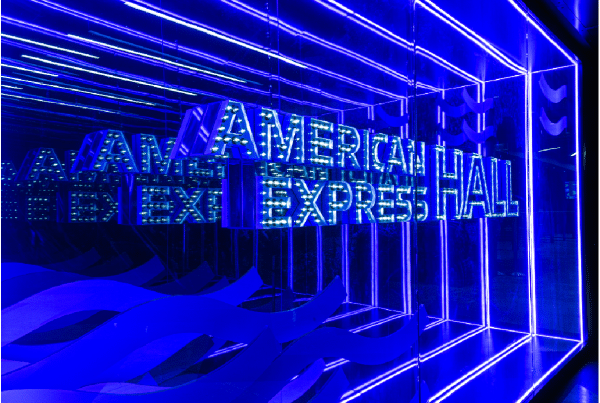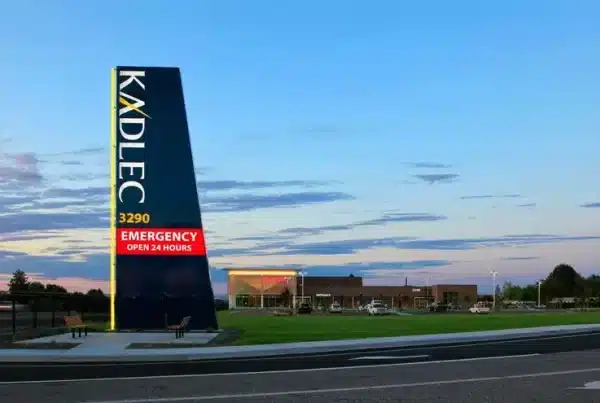As technology and design continue to evolve, signage is no longer just about identification—it’s a crucial element of branding, wayfinding, and user experience. Architects and designers play a key role in shaping how signage integrates with modern environments, balancing aesthetics, functionality, and innovation. At National Sign Corporation, we stay at the forefront of emerging trends to help professionals create impactful signage solutions. Here’s a look at what’s shaping the future of signage.

Digital Integration
Dynamic Content and Interactivity
Forget static signs. Digital signage is exploding, offering dynamic content, real-time updates, and interactive experiences. Think wayfinding kiosks, digital directories, and eye-catching displays that adapt to time of day, audience demographics, or even real-time data.
Architectural Consideration
For architects, this means integrating digital infrastructure into building designs from the outset, considering power sources, network connectivity, and screen placement for optimal impact. Interactive elements, like touchscreens and QR codes, can further engage users and provide valuable information.
Customization
Consumers expect personalized experiences, and signage is no exception. Dynamic digital displays can be tailored to specific audiences, delivering relevant messages and promotions.
Beyond digital, even traditional signage can incorporate customizable elements, allowing businesses to adapt their branding and messaging as needed. Architects can design modular sign systems that allow for easy updates and personalization, ensuring longevity and flexibility.
Sustainability
The signage industry is adopting eco-friendly materials like recycled metals, sustainable woods, and energy-efficient LEDs.
Architects drive sustainable signage by specifying eco-friendly materials and practices throughout the sign’s lifecycle, from sourcing to recycling.

Experiential Signage
Smart Signage and Data Analytics
Connected signage generates valuable data that can be used to optimize messaging, improve wayfinding, and even understand customer behavior. Smart signs can track foot traffic, analyze dwell times, and provide insights into audience engagement. Architects should consider incorporating the necessary infrastructure for data collection and analysis into their designs, ensuring that signage can contribute to a smarter and more efficient built environment.

Wayfinding and Accessibility
Clear and intuitive wayfinding is essential for any building or public space.
Universal design principles should be applied to ensure that signage is accessible to everyone, regardless of age, ability, or language.
Accessible signage includes clear typography, tactile options, multilingual support, and digital solutions with personalized directions and real-time updates.
Integration with AR/VR
Augmented and virtual reality technologies are opening up new possibilities for signage. AR overlays can provide additional information about a product or location when viewed through a smartphone, while VR can create immersive experiences that bring signage to life. Architects should consider how AR/VR can be integrated into their designs to enhance wayfinding, storytelling, and user engagement.
National Sign Corporation: Your Partner
At National Sign Corporation, we understand the complexities of the modern signage landscape. We work closely with architects and designers to develop innovative and effective signage solutions that meet the evolving needs of their clients. From concept to installation, we provide expert guidance and support, ensuring that your signage is not only visually appealing but also functional, sustainable, and future-ready. Contact us today to discuss your next project and explore the possibilities of the future of signage.



